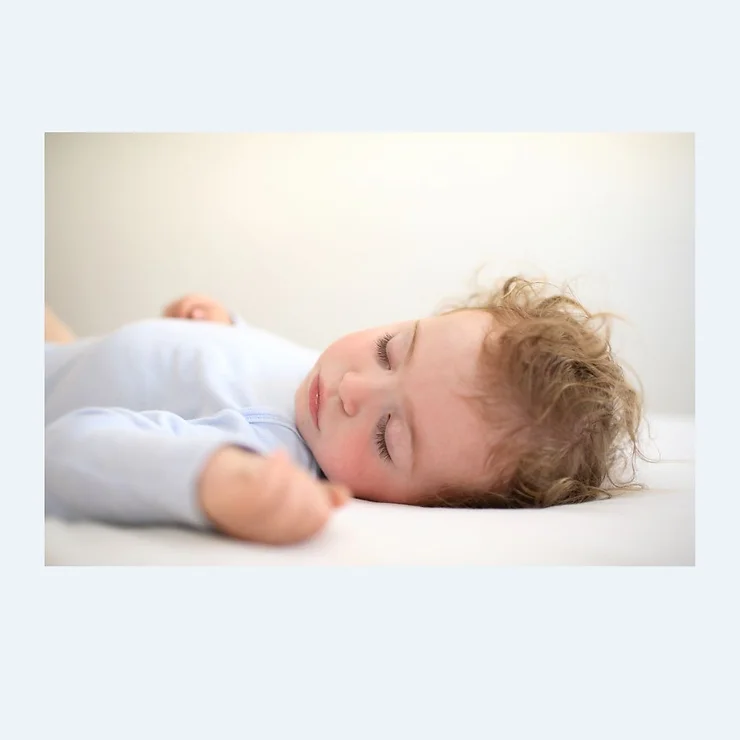Top 5 Healthy Sleep Tips for Babies, Toddlers, and Preschoolers
When looking at your child’s sleep, it’s important to look at the big picture.
There are a handful of elements that have a significant impact on your child’s ability to fall asleep, stay asleep, attain the deepest and most restorative sleep, and for younger children, to take longer and more predictable naps as well.
With or without the presence of a sleep issue, make sure to consider these 5 elements to set your child up for having a healthy relationship with sleep.
1. The Room:
Children sleep best in a room that encourages deep sleep. An ideal sleep environment is very dark, quiet, boring, and cool. I recommend black out curtains or shades, a continuous white noise machine, and leaving the distracting mobiles or toys in the playroom. A cozy sleep temperature is typically between 68-72 degrees.
While different children are more or less sensitive to the ideal sleep environment, if there is any sort of sleep issue, the very first thing to address is the darkness level of the room. It should be so incredibly dark that there is no way a bit of light shining through the corner of the window could possibly interfere with their natural melatonin production or pique their natural curiosity. It should be completely and totally dark during all sleep periods to make sleep come as easily as possible.
2. The Timing:
The timing of sleep in babies and children over 4 months of age is governed by their circadian rhythm, or natural body clock. This means that they are biologically hard wired to fall asleep easiest and achieve the most restorative sleep at certain times of the day.
Time to move away from focusing on sleep windows, or periods of time between naps, and instead focus on the clock. This is so much easier and so much more effective. While it may sound a little nuts to some, it just works. Below are some examples of biologically appropriate sleep schedules for children based on age.
3 Nap Schedule
Age 4-5 months through 7-9 months
Morning nap beginning between 8:30 and 9am
Afternoon nap beginning between 12 and 1pm
Cat nap beginning between 3 and 4pm
Bedtime beginning between 6 and 8pm.
2 Nap Schedule
Age 7-9 months through 15-18 months
Morning nap beginning between 8:30 and 9am
Afternoon nap beginning between 12 and 1pm
Bedtime beginning between 6 and 8pm.
1 Nap Schedule
Age 15-18 months through 3.5-5 years
Afternoon nap beginning between 12 and 1pm
Bedtime beginning between 6 and 8pm.
0 Nap Schedule
Quiet time beginning between 12 and 1pm
Bedtime beginning between 6 and 8pm.
3. The Routine:
Babies and children thrive on structure and routine. Schedules that are structured around sleep, meals, and play help to reinforce those natural body clocks that help to prepare our children for transitioning into each activity with ease.
A bedtime routine, or sleep routine, is a simple 10-15 minute set of soothing activities in preparation for sleep that happen in the exact order and amount every single time. This helps to cue their little brains that sleep is coming, and helps them to feel safe and secure in knowing exactly what to expect.
Some children do better when the energy of the entire home comes down 15-30 minutes before the beginning of the bedtime routine. This means turning off screens, shutting curtains or blinds, turning down unnecessary lights, and purposefully using a calmer voice.
4. The Sleep Associations:
Placing your child down to sleep while still awake most of the time allows them to build the skill of falling asleep independently when they naturally wake in the middle of the night or too early in the morning. Babies and children who are given the opportunity to fall asleep independently, are less likely to experience bedtime resistance, night wakings, and early risings. When children associate a certain activity, such as lying with a parent, watching TV, nursing, or rocking with falling asleep, it’s likely they will learn to require that activity every time they transition between sleep cycles. A child that is able to fall asleep independently can wake up only slightly between sleep cycles, notice that everything is exactly as it was upon falling asleep, and then drift back to sleep seamlessly.
Some children will take to this skill easier than others. If this is a challenge for your baby or young child, addressing the other four elements related to healthy sleep will help to make this one aspect as easy as possible for your young learner. Once all of the “easy background work” has been addressed, it’s time to decide on an effective sleep training response method to make teaching independent sleep skills clear and kind.
5. The Consistency:
The consistency in which parents respond to their children during sleep routines and during sleep times play a significant role in how well babies and children are able to sleep long term.
Bedtime resistance, night wakings, early risings, and curtain calls are a few of the many very normal ways in which our children challenge us in regards to sleep. The key to handling these situations and to avoid creating lasting habits that spiral out of control, is maintaining a united front amongst primary caregivers, and responding in a consistent way that demonstrates clear boundaries around sleep.
In the presence of any sleep issue, it will always help to consider each of these five elements in detail. When all five of these elements are carefully addressed, you are setting your child up for sleep success, allowing them to lean into healthy restorative sleep as easily as possible.
Skimming through this information and only want two things to take away?
In the presence of any sleep issue, take necessary steps to make your child’s sleep environment darker for all sleep periods and shift bedtime earlier.
If you are struggling with your child’s sleep and you are interested in a comprehensive and fully personalized sleep plan along with daily support along the way, check out my sleep support services, or schedule a free discovery call to learn more about working one on one with me and improve your child’s sleep as quickly and kindly as possible!

